If your funds are between 3000 and 100,000, there is a simple but practical trading method that allows you to 'earn forever'! [Cryptocurrency Secrets]
If you plan to invest in cryptocurrency, please take a serious and careful look at my answer, as this post will let you know how to earn money and where the money comes from.
If you truly hope to go further on the trading path, you must calm down and study deeply. In addition to solidly mastering the basics and keenly analyzing market news, in-depth research on technical indicators is also indispensable. Only by comprehensively improving your cognition and ability can you navigate the unpredictable market with ease.
If you do not conduct in-depth market research and capital planning, blindly following the trend will only gradually deplete your funds. Ultimately, as a retail investor lacking a foundation, you may enter with hope but leave with regret.
In the investment world, choosing which method or strategy depends on how much capital you have; different funds choose corresponding methods and strategies.
First, let's talk about the funds around 100,000; you can choose a relatively stable trading strategy.
The year 2025 is my 8th year of trading cryptocurrencies full-time. Last year I spent a full 11 months doing contracts, growing from 20K to now 7.2M! Trading cryptocurrencies occupies about 2-3 hours of my daily rest time!
In the cryptocurrency world, if you want to truly achieve financial freedom and compound interest, methods, techniques, and forming your own profit system are crucial! Once you learn to master them, the cryptocurrency world will feel like your 'ATM', making money as easy as breathing!
After more than 10 years of cryptocurrency trading, my path to wealth is summarized as follows:
The first ten million took the longest and was the most painful, with the trading system constantly being reshaped and polished, taking one and a half years.
The second ten million took three months
The third ten million only took 40 days
The fourth ten million only took 5 days
75% of the funds were earned in half a year.
Summed up a set of methods suitable for beginners with small funds to make big profits [worth collecting]
A trading strategy for 100,000 funds has only 4 steps, very simple!
Step 1:
Select cryptocurrencies, open daily charts, and only choose cryptocurrencies with MACD golden crosses, preferably those above the 0-axis golden cross, as this is the highest probability condition!
Step 2:
Buy signal Switch to daily chart, focus only on one moving average -- daily average. The rule is simple:
Holding online: buy and hold when the price is above the daily average line,
Sell offline: sell immediately when the price falls below the daily average line.
Step 3:
Position management After buying, observe the price and trading volume:
1. If the price breaks above the daily average line, and the trading volume also stabilizes above the daily average line, buy in full.
2. Selling Strategy: · If the rise exceeds 40%: sell 1/3 of the position. · If the rise exceeds 80%: sell another 1/3 of the position. If it falls below the daily average line: clear all remaining positions.
Step 4:
Strict stop loss. The daily average line is our core operation. If the price suddenly falls below the daily average line the next day, regardless of the reason, it must be sold in full, and one cannot be complacent!
Although the probability of breaking below the daily average line through this screening method is low, we must still maintain risk awareness. After selling, just wait for the price to stabilize above the daily average line before buying back.
This method is simple and easy to learn, very suitable for investors who want to achieve stable profits.
Remember, the key to success is strictly following each step, not being influenced by emotions! After learning my simplest trading method, I have had a smooth journey in cryptocurrency, with green lights all the way!
If you are determined to trade cryptocurrencies for a lifetime and hope to one day support your family through trading, then please remember the following 10 iron rules. The content is not much, but every sentence is practical. Share with those destined to receive it!
1. Strong coins must be promptly followed up after falling for 9 consecutive days at high positions.
2. Any cryptocurrency that has risen for two consecutive days must be reduced in position promptly.
3. Any cryptocurrency that rises more than 7%, there is still a chance to rise the next day, can continue to observe.
4. Strong bull coins must wait until the pullback is over before entering the market.
5. If any cryptocurrency fluctuates mildly for three consecutive days, observe for another three days. If there is no change, consider changing.
6. If any cryptocurrency fails to recover the cost price of the previous day the next day, exit immediately.
7. On the rise list, if there are three, there must be five, if there are five, there must be seven. Cryptocurrencies that have risen for two consecutive days should be entered on dips, the fifth day is usually a good selling point.
8. Volume-price indicators are crucial; trading volume is considered the soul of the cryptocurrency world. When the price breaks out at a low point during consolidation, it needs attention; when a breakout stagnates at a high point, one must decisively exit.
9. Choose only those cryptocurrencies that are in an upward trend to operate, as this maximizes the odds and does not waste time. The 3-day line turns upwards, indicating short-term rises; the 30-day line turns upwards, indicating medium-term rises; the 80-day line turns upwards, indicating a main upward wave; the 120-day average line turns upwards, indicating long-term rises.
10. In the cryptocurrency world, small funds do not mean no opportunities. As long as you master the right methods, maintain a rational mindset, and strictly execute strategies, patiently wait for opportunities to arise.
My trading method is very simple and practical; it took me only one year to trade to 8 digits, entering only when the opportunity is right, not trading without a pattern, and maintaining a win rate of over 90% for five years!
I have organized the essence of the [PA Naked K Trading Method]. As long as you master it well, trading with this method will guarantee a 30-fold increase in your account. Today I specially organized this valuable information and share it with those destined to receive it. Please save it well.
I will explain the basic logic of Price Action in the most concise form, proving to you that Price Action is a very simple and practical concept, which is the biggest guarantee for us as retail investors to survive in the market.
Once you master it proficiently, it can become your market advantage, allowing you to flexibly customize different coping methods and trading plans in various market conditions, without struggling anymore.
Of course, I am not some god-like figure, and learning Price Action does not mean you will become invincible
Can only ensure that your reaction to the market during the trading process will be faster, the timing of entry will be more accurate, increasing your chances of success
1. What is Price Action
Whether in the foreign exchange market, stock market, futures market, or cryptocurrency market, it is filled with many unquantifiable things such as emotions, fears, greed, human nature, conspiracies, expectations, predictions, opinions, news, etc.
Can we pack all these things and throw them into a huge processor to convert them into a quantifiable value?
Of course! This value is the candlestick
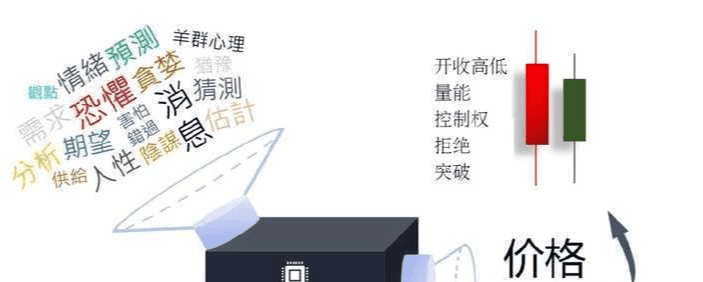
The value of the candlestick itself is already significant; we can actually obtain a lot of information just from the candlestick
If we take a knife to dissect candlesticks, we will find that at different times, different positions, and different markets, we will see different feedback from buyers and sellers, and this feedback is Price Action.
Simply put
Price Action includes three parts
1. Market Structure
2. Candlestick Patterns
3. Chart Patterns
These three parts have different uses and logics
Price Action translated into Chinese is: Price Behavior
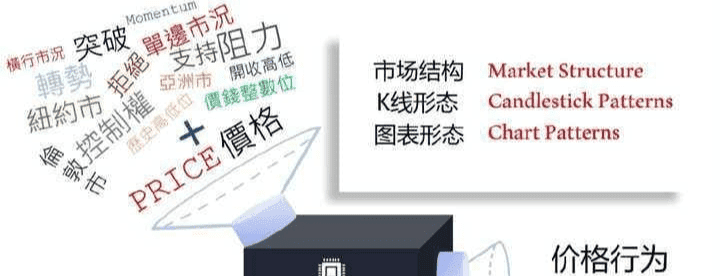
What is behavior?
As humans, whenever we do anything, there is always logic and reason behind it, and the market is the same. The collision behind candlesticks is human nature.
Next
We will break down the above three parts. If you feel a huge gain after reading, feel free to follow me.
Because in the near future, I will focus on various parts of Price Action
Individually explain the logic behind each pattern and the most ideal usage
2. Market Structure
Generally, when we look at charts
Whether in stocks or digital currencies
Often disturbed by different news, emotions, speculations, or various types of news
Distracts us
Instead, it makes us overlook the true market structure

And the market structure
There are only three possibilities: 1. One-way market. 2. Trend reversal. 3. Sideways volatility
[One-way Market]
As the name suggests
The market is currently moving in a certain direction
At this point, its supply and demand are in an unbalanced state
There are two methods to help us discern
Is the current market a one-way market?
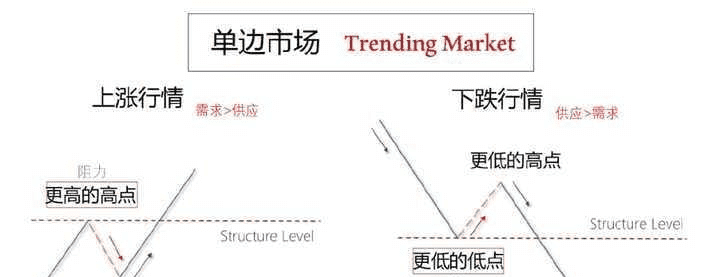
The first method:
As the price rises
Will continuously create higher highs, higher lows, and higher highs
(That is, constantly creating new highs)
In a downward trend
Will continuously form lower lows, lower highs, and lower lows
(That is, constantly creating new lows)
When the market is in a one-way market
Every time the price creates a new high or low
Will unconsciously form new support and resistance levels
The most common ones
That is after every new high or low is broken
Will retrace and rebound to the previous high or low
This is why
We will often see on the market
Yesterday's resistance has become today's support
Yesterday's support has become today's resistance
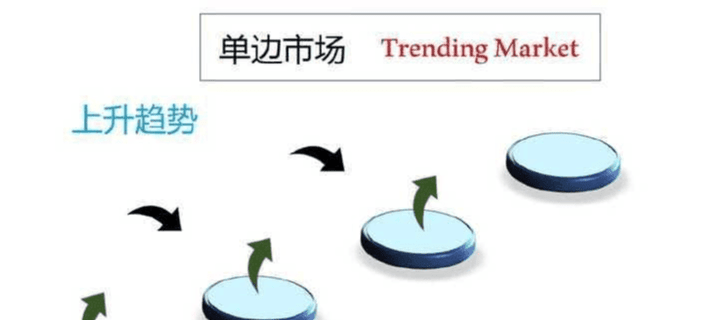
It's like jumping high
Jumping up one level at a time
Every time it jumps to the next new high
Affected by gravity, it falls back
Then use the reaction force to jump higher
Repetitively jumping higher and higher
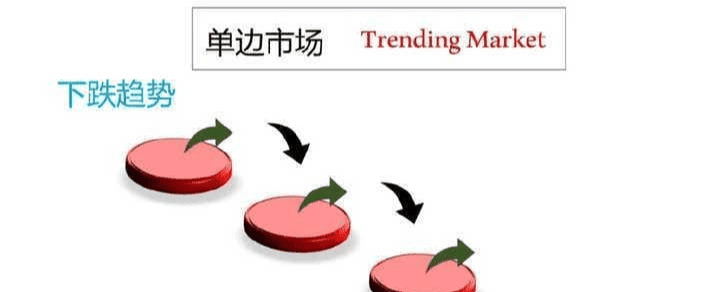
The downward trend is the same
Jumping down one level at a time
Jumping lower and lower
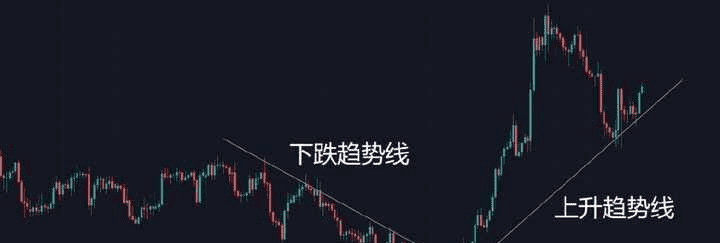
The second method:
But many times
The market will not develop strictly according to the situations described in the books
Most of the time, we see a chaotic market
At this point
We can use trend lines to help us judge the market trend
Generally speaking
As long as there are 2 points, they can be connected to form a line
And through its slope to judge its strength
The steeper, the stronger the trend's power
Conversely, the flatter the trend line, the weaker the trend
In a sense
The trend line itself is a support and resistance level
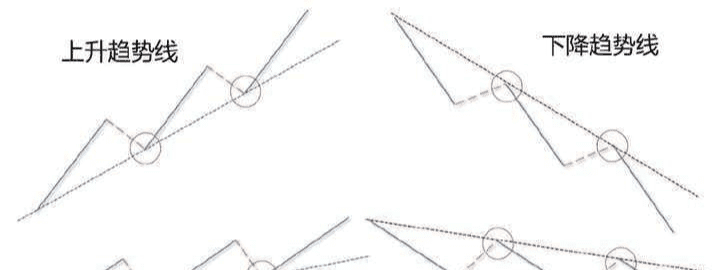
In an upward trend
The market has always adhered to this trend line
Every time it touches this support level, it will rise
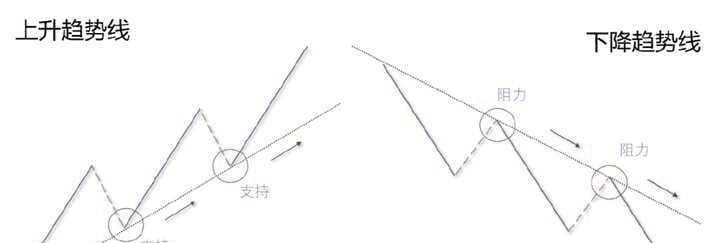
In a downward trend
Step by step gradually downwards
We are adhering to this trend line
Every time it hits this resistance level, it will drop down
We are in daily trading
If we apply the trend line
Then combine with the key level concept mentioned earlier
Will greatly increase the win rate of trades
The above two methods
This is the most common method to utilize Price Action to judge market trends
[Trend Reversal]
Generally speaking
In an upward trend
We will not act like fools against the market
To make a selling operation
Conversely, in a downward trend
We will not think about buying
None of us know how long a trend can last
You shouldn't casually guess the top
So sell at the top
Or purely feeling that the price is too low
Can buy the dip
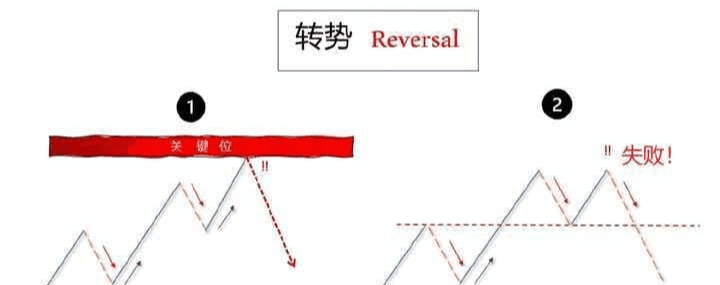
Usually, I will only do so in the following two situations
Only then will you make counter-trend trades
They are:
The price has reached a strong and key support resistance level that it cannot break through;
Or the one-way market trend has failed

The first situation
You need to pay attention to the reaction when the price encounters major support and resistance levels
Generally, we refer to this type of support and resistance level as 'key levels'
The so-called key level compared to ordinary support and resistance levels
Will be more effective and accurate
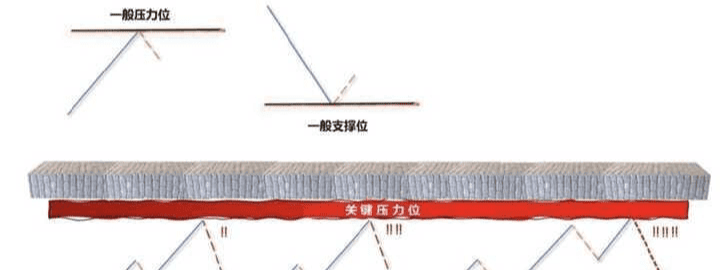
Simply put
You can think of ordinary support and resistance levels as a thin piece of wood
Although it has certain hardness
But there is still a chance to break it with bare hands
And the key level is a brick
The price may also drop sharply
But just cannot break through this strong and powerful position
And these positions are often from long-term institutional investors
The place to deploy entry or exit
So there are often false breakouts, sharp rises, or sharp drops
Once you learn the concept of key levels.
You will understand:
Why is my order
Originally moving smoothly, in a profitable state
But suddenly it drops sharply or rises sharply
Or why my stop loss is often hit
Continue to move in the right direction as I predict
Similar situations in the future
Can be greatly reduced
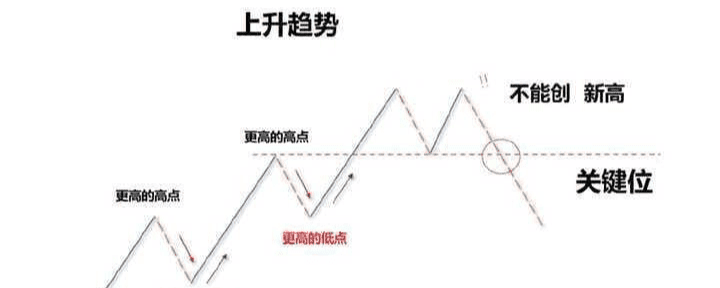
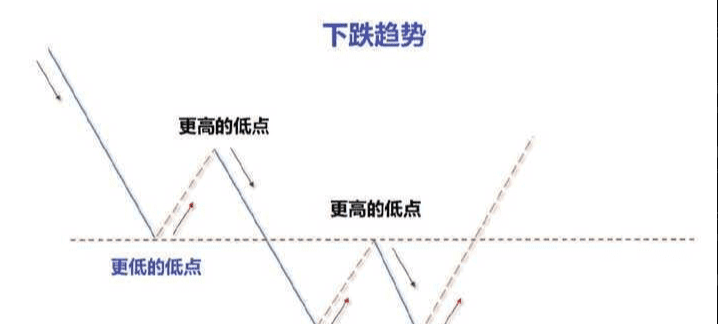
The second method
Is to use fundamentals to judge whether the market trend has changed
When the upward trend can no longer create new highs
At the same time, the price breaks down below this key support level
We will consider it a trend beginning to reverse downwards
In a downward trend
When the downward momentum is no longer sufficient to push the price to create new lows
And the price is pulled up by the opposing force
Break through the key resistance level
We will consider it ready to start a new upward trend
[Sideways Volatility]
The third situation: Sideways volatility
This is a situation we often encounter in the market
Except in extremely rare situations
No market will rise or fall forever
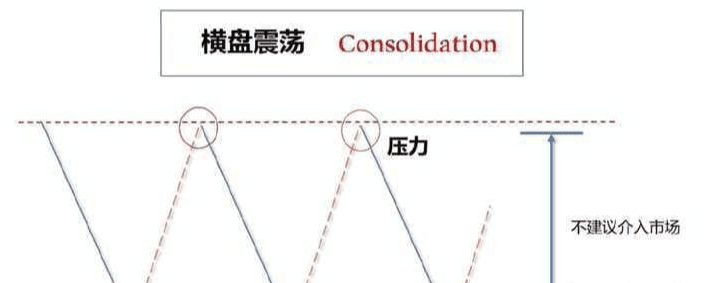
As long as there are relative highs in the market
There will be people taking profit and exiting
Of course, some people will choose to wait and see
There will also be relatively low positions
Some may feel it is worth buying and start to buy the dip and accumulate
Plus different news, different perspectives, and different analyses
Temporarily form a balance in the market
Without a clear direction
Until one side breaks this balance at a certain moment
Has evolved into a one-way market
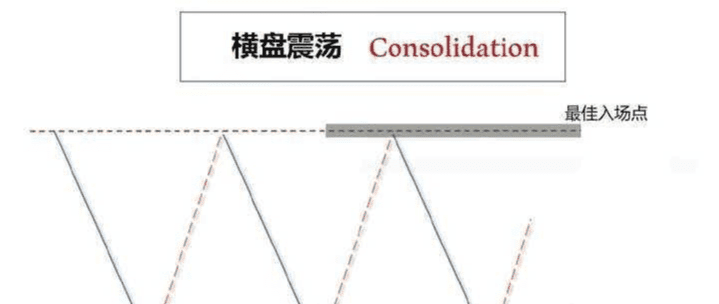
Buffett said: Only gods can consistently profit in swing trading
So here
My advice to you is
Try not to intervene in trading during the middle of a sideways market
Otherwise, you will be played by the market
Buy what is wrong
If you insist on trading in a volatile market
Then you must follow these two points
Otherwise you will lose everything

1. Combine with large cycles
Taking this example
I see the price is in a downward trend on the daily chart
Currently making an upward retracement
And the candlestick from one or two days ago has already shown a long shadow
This sign is like we prove
The current market retracement may be nearly over
Preparing to continue to fall
At this point, we look at the small timeframe 1-hour chart
At the top of a volatile market
A Pinbar candlestick pattern has appeared
Is a typical bearish candlestick pattern
So
When the small timeframe chart and the large timeframe chart align
Only then will the success rate of this trade be high
2. Ensure your risk-reward ratio is not less than 1:1
I don't think this sentence needs explanation
If your risk-reward ratio for each trade is less than 1:1
In the long run, your position will slowly decrease
Being willing to lose but not willing to win is a major taboo in trading
Avoid trades that lose more than win
Otherwise, your capital curve will be unhealthy
Talking about this
The core of Price Action - market structure is finished
3. Candlestick Patterns
Seeing here
Congratulations
Has successfully entered the door of Price Action
What needs to be done in the future
The more you look at charts and practice
As long as you can accurately identify the several situations mentioned earlier
Regardless of the cycle or situation
You have the ability to discern what the market is doing
Will help you filter out many wrong decisions
More flexibly formulate the right trading plan
Greatly improve your trading performance
In the components of Price Action
Price accounts for a large proportion
At the beginning of the article, I mentioned
Candlestick is a visualized price
We can obtain a lot of helpful information for our market analysis through candlesticks
But to make it more convenient for our trading
The market has set a regular quantifiable signal for us
Thus, various candlestick patterns have emerged
Many times
Besides the market structure we just learned
Also rely on candlestick patterns to provide us with dual assurance
Give us confidence
Triggers our trade
So learning candlestick patterns is equally important

First, let me briefly introduce the definition of this pattern
Next, I will tell you how to analyze market structure in Price Action
Finding the most favorable position
And combined with this candlestick pattern to enter
To win a high win-rate trade
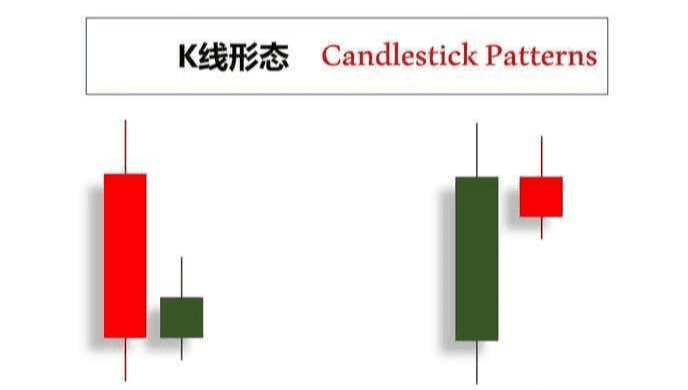
Inside Bar
Because its shape is like a pregnant woman
So in Chinese it is called bearish engulfing and bullish engulfing
Bullish engulfing is composed of a bearish candlestick plus a very small bullish candlestick
This bullish candlestick, whether body or shadow
All within the previous candlestick
Bearish engulfing is just the opposite
The body and shadow of the bearish candlestick are both within the previous bullish candlestick
Generally speaking
There are two common methods to trade this pattern
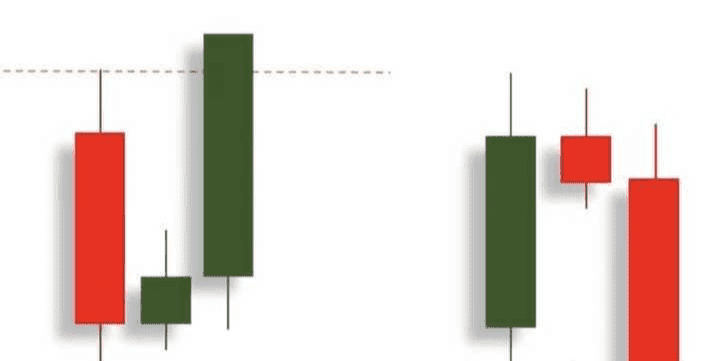
The first
When the price breaks through the high or low of the previous candlestick
No matter whether this latest candlestick has ended or not
We will all enter to buy or sell
Belongs to left-side trading
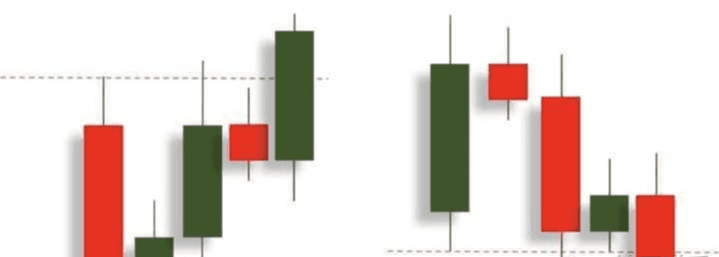
The second more conservative approach
Is waiting for this candlestick now
Truly ending at the high or low of the previous candlestick
Only enter after stabilizing and confirming the direction
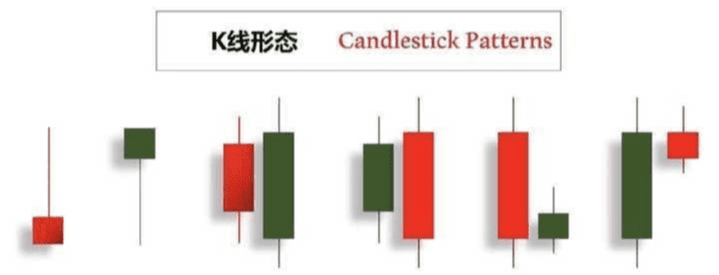
When we refer to candlestick patterns in trading
The biggest taboo is seeing a Pinbar and immediately entering the market
Seeing a Pin Bar, we sell
See a bullish engulfing and buy
.......
This is a very wrong approach
Because of the candlestick patterns
Their role should be as confirmation models
Can only serve as a supplement
Their composition often does not exceed 3 candlesticks
So it cannot represent more comprehensive information and trends
Using them alone to make trading decisions
Actually not a wise choice
The best practice is to combine with market structure
In a most favorable position
Use the most accurate timing to enter
If you can understand this principle
I believe you will stay away from the bad mentality of chasing highs and cutting losses.
And the distance to stable profits will not be too far

Let's look at two examples of charts
The first: examples of continued trends
In the above picture
The price starts to retrace after creating a new high here
At this point, a bullish engulfing pattern appears here
A bearish candlestick surrounded by a small bullish candlestick
But this pullback has slowed down
When the candlestick pattern ends, it is immediately followed by a strong bullish candlestick
The closing price is above the bearish engulfing pattern
Proving the buyer's formal return
We choose to enter after closing here
Set the stop loss at the nearest key level
The results prove that our trade is correct
The candlestick smoothly drives the price upwards
Successfully reaching the profit point

The second example: Trend reversal
In the above picture
We see a downward trend that has persisted for a while
The price begins to no longer create new lows
This is the first sign
Indicates that this trend is beginning to weaken
After the price breaks through this key level
Then return to this position
At this time made a
Engulfing patterns
A bearish candlestick completely wraps a small bullish candlestick
When the next candlestick ends
Formally determine the failure trend of the seller's attempts
Continue to rebound
4. Chart Patterns
What is a chart pattern?
Believe that if you have done technical sharing for a while
You will find that the market constantly does one thing through repetitive patterns
And the chart pattern provides such a trace
To facilitate our traceable analysis
Discover what the market is doing at this moment and the logic behind it
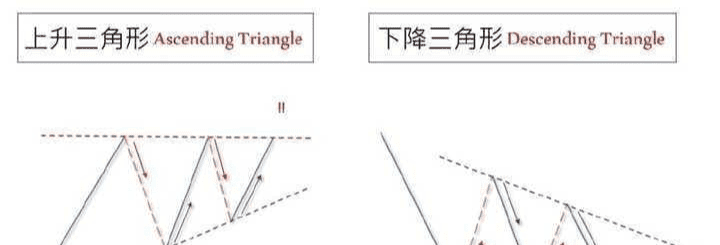
Today I will share two
Chart patterns often seen in the market
Ascending Triangle
Descending Triangle
In an upward trend
The price encounters the first resistance
This resistance level will become the base of this pattern
The price begins to walk slightly in the opposite direction for a distance
And this low point will become the lowest point of this pattern
When the price returns to the first resistance level at the same position
Will encounter resistance again
Once again moving in the opposite direction
But today's drop will be smaller than the last one
The downward force is significantly weakened
Forming the second support here
We connect the two low points into a straight line
Basically, this pattern has formed
When the price returns to this resistance level for the third time
The price successfully broke through the resistance
Continue a rising trend
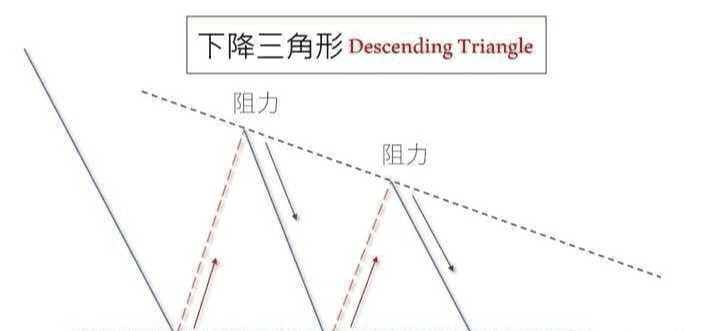
The downward triangle is the same
The impact of horizontal support levels on prices
Once smaller than once breaking through
Finally breakthrough successfully
Continue a downward trend

Generally speaking
The price must touch this pattern at least 5 times
Up 3 down 2 or down 3 up 2
More than five times is also completely fine
But if you enter the market immediately just because it has broken through
Is a very risky behavior

In the theory of Price Action
There is an important concept called Re-Test
Also called backtesting
This means
No matter what kind of market and asset
After breaking through the key level
Often will retrace to the key level

For example, the 4-hour chart of BTC shown above
After the price breaks through 40000 USD. No longer creating new highs, then immediately turns back down, followed by a rebound, and returns to the high of 40000, it only took 5 days in total, which is a very favorable backtesting example.
Therefore, to improve the trading win rate, I usually wait for the price to break through and return to this level of pressure or support, waiting for the market to test me again. If I see a clear rejection, such as a long candlestick shadow or similar situation, I will enter. This approach, although conservative, may sometimes cause you to miss some trading opportunities, but the success rate is much higher than simply entering the market just because it broke through.
The market lacks trading opportunities most of the time. What it lacks most is patience. Whoever has patience can earn money.
For example, in the market shown in the picture above, those without patience will feel that the price is falling from 41000, neither daring to short nor to go long, only blaming themselves for missing the opportunity. However, those who have learned to use Price Action and understand backtesting will wait to buy the dip.
Because he believes the price will definitely rise again
So we buy the dip around 30000
Heavy position entry
When the price stays around 40000 without breaking through the key level
Close the position immediately
Reverse and short again
A big wave can earn a lot
This is called seizing the opportunity and making a stunning move!
Seeing here, everyone believes in Price Action
And the candlestick patterns and chart patterns derived from them
Everyone has a preliminary understanding, and if you find it helpful, please like and save it
I am Xiao Xun, having experienced multiple bull and bear markets, with rich market experience in various financial fields. Here, I penetrate the fog of information to discover the real market. More opportunities to grasp wealth secrets and discover truly valuable opportunities, don't miss out and regret!
Xiao Xun only does real trading, and the team still has positions to join speed$BTC